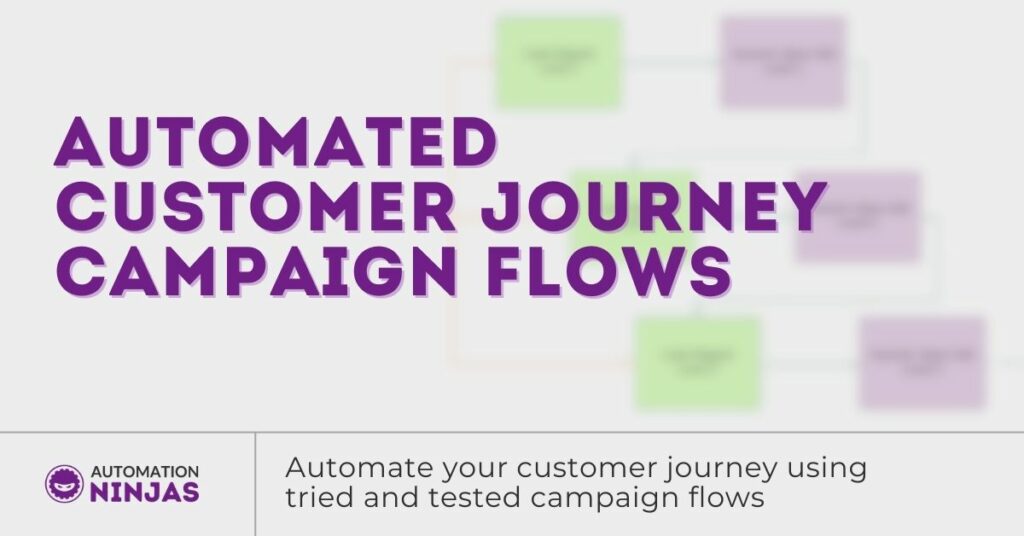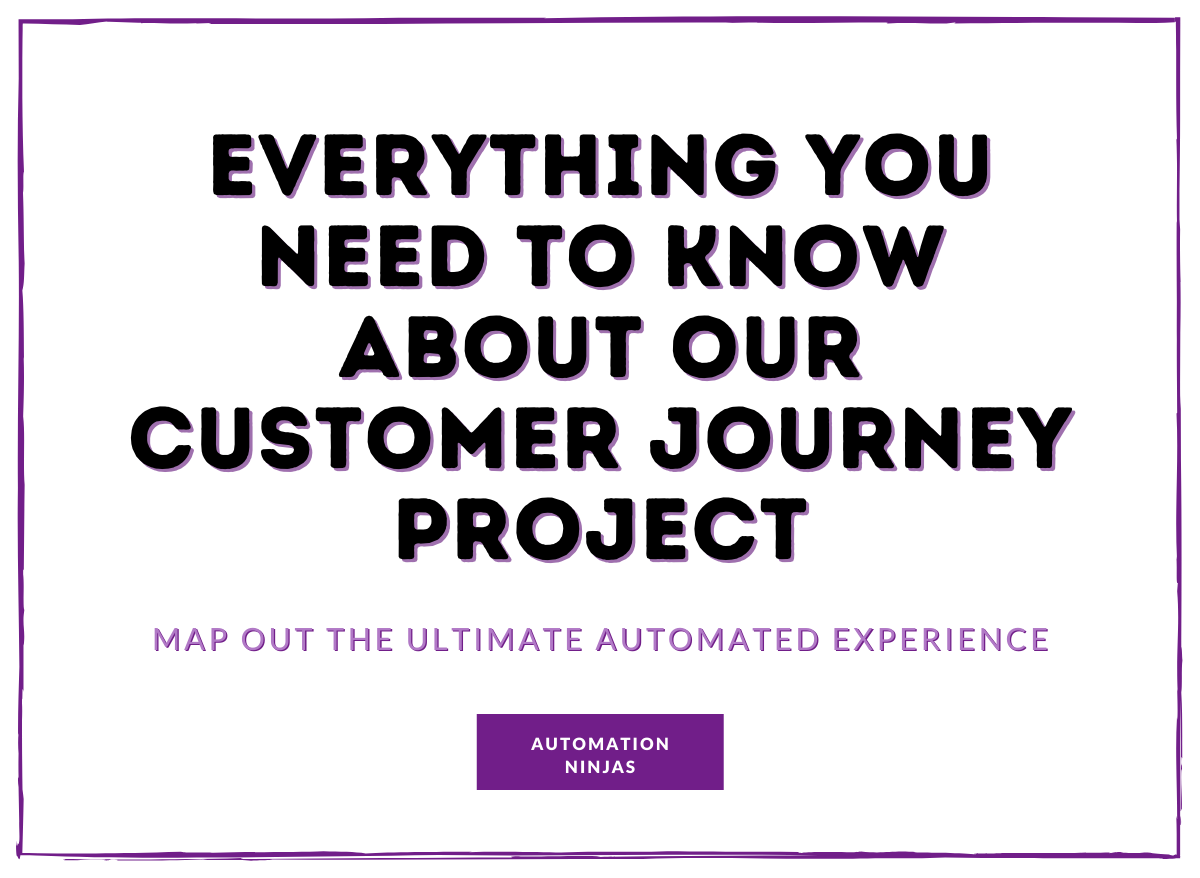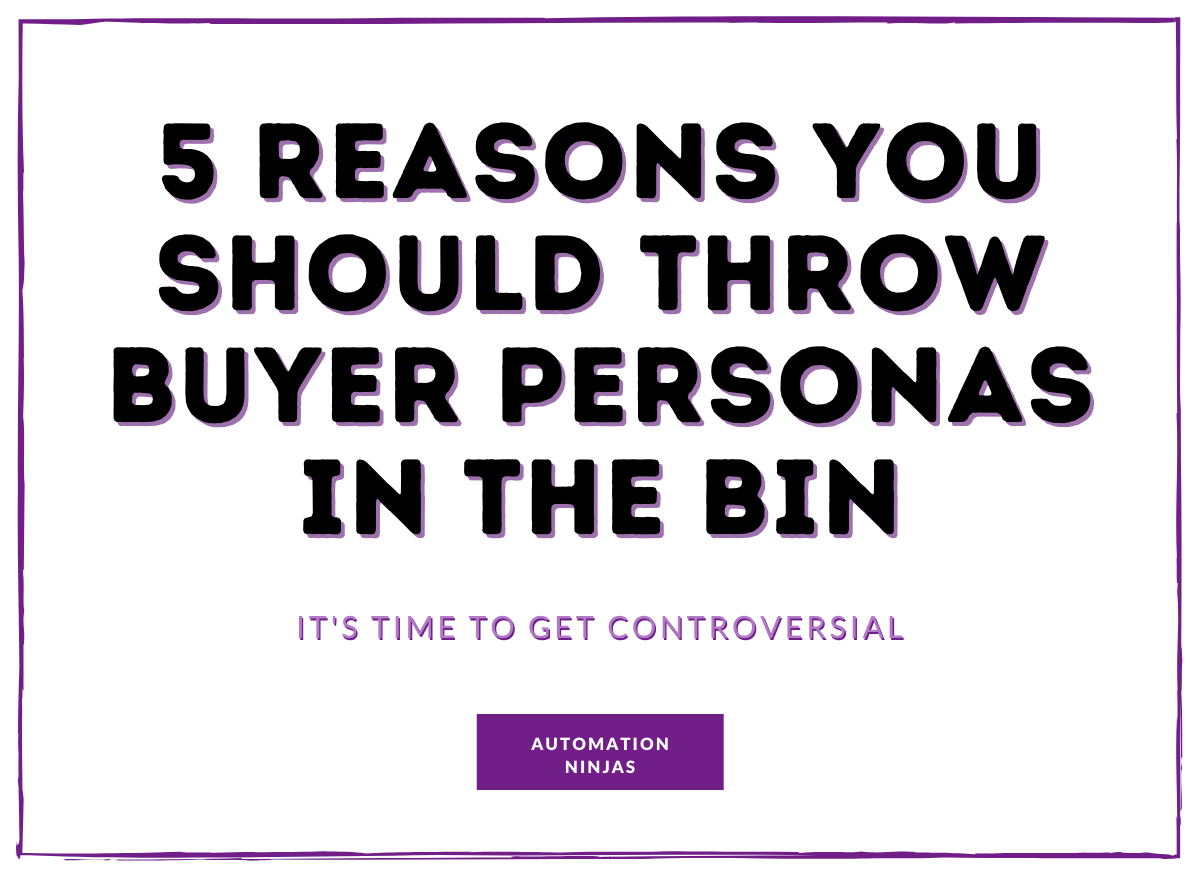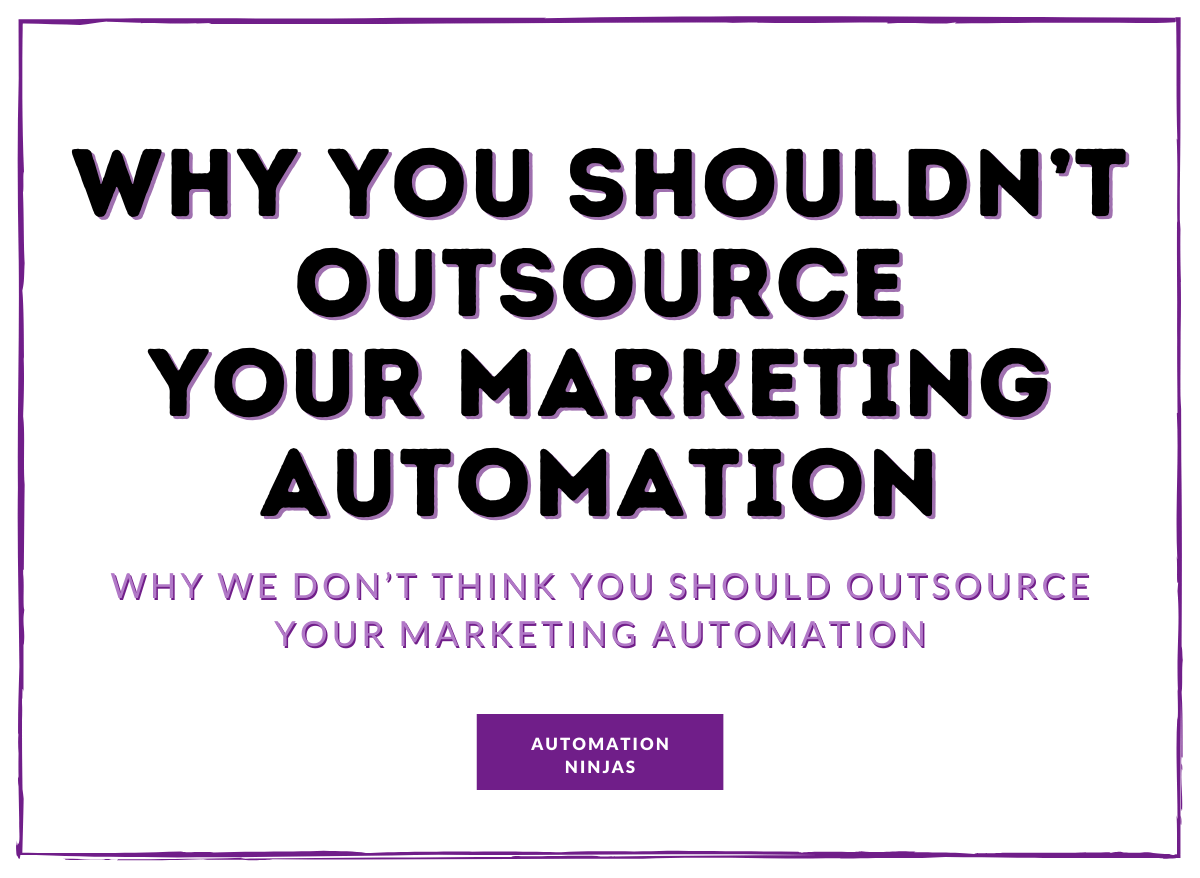A customer journey is the backbone of your business. If you believe your customers set one foot in the door and immediately make a sale, then I’m sorry to burst your bubble - there’s a lot more to it than that.
Your customer journey is the lifecycle of each and every customer that comes through your door, from when they first hear your name to investigating your services or products, then to making a purchase and keeping them a keen customer after that.
If you haven’t built your customer journey yet, we’ve got you covered. Have a read of our blog post: What is customer journey mapping?
What is the difference between a customer journey and an automation journey?
Once you have a solid understanding of the events your customers journey through (see what I did there?), then it’s time to automate it. We are Automation Ninjas after all…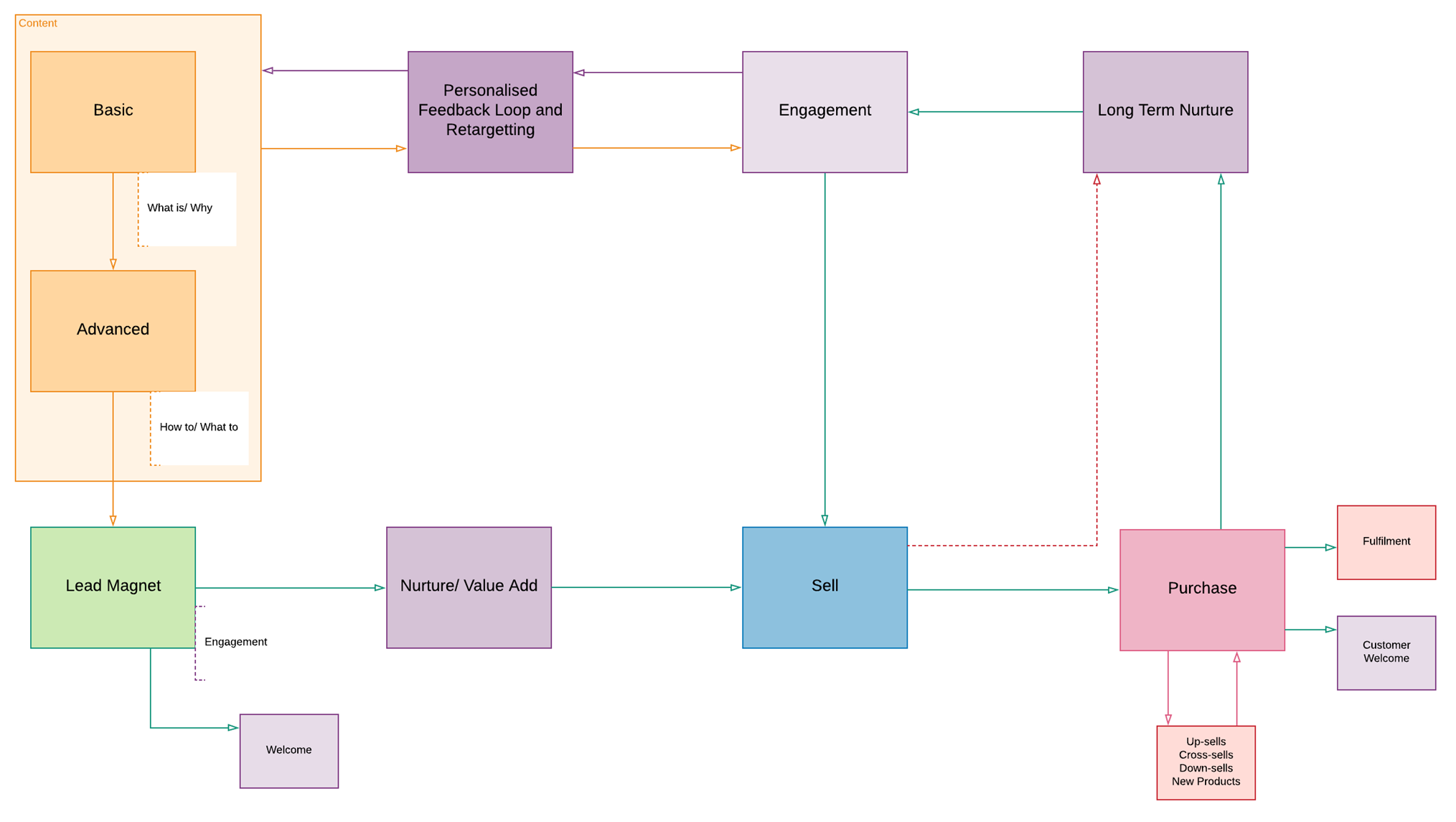
The above image is what we call a base customer journey.
Whatever your niche and unique selling point is - whether you’re selling delicious bespoke wedding cakes or expertise services in the legal industry, your customer journey will likely take a form similar to this.
As customers flow along the journey, they move through four main areas: Attract, Engage, Sell and Wow.
Attract - Fairly self explanatory, this is the start of the customer journey, when a customer is pulled in by the content you are providing them and sign up to your email list.
Engage - Once a customer is in your email list, they reach the Engage section, where a relationship of trust is built between you.
Sell - The one we all recognise. Because of the trust, respect and expertise that you have created in the previous stages, a customer hopefully will be purchasing your product or service.
Wow - This final stage is all about customer lifetime value. After the sale, you’ll be engaging with the customer to keep that bond strong, ideally resulting in future sales and a top-notch testimonial.
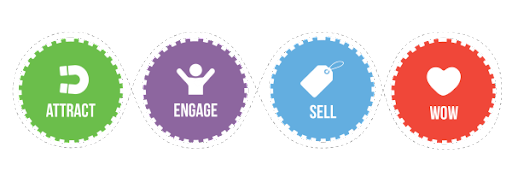
An automation journey is simply combining your customer journey with marketing automation. This means breaking down each element into automated series - often referred to as campaigns - that can deliver exactly what your customers need at the whichever stage of the journey they are in.
So how do we do this? Let’s dive into each stage and exactly what you need to implement in your marketing automation platform to lead your customers through their journey, using our BEAUTIFUL flowcharts!
Customer Journey Stage 1: Attract
Your customers’ first impression of you counts. Big time.
Like a first date, it’s all about the initial attraction. It could sink or swim.
So let’s make sure we’ve got lots of attractive content that your potential customers will want to consume.
Lead Magnets

If you didn’t know already, Lead Magnets are free resources used to build trust with potential customers, to showcase your expertise in your field and, importantly, act as a gateway for leads to give you permission to contact them.
Have you ever given your email address to someone in return for a free eBook, checklist or to enter a giveaway? These are all forms of lead magnets.
The problem is, often that’s where the communication ends. That’s a big no-no in our eyes and is exactly when marketing automation can make a difference.
You can see from the image above that after a lead has engaged with some informative content, their next step is to sign up to the lead magnet. But rather than simply receiving the lead magnet and ending there, we like to drip feed nurture emails to them.
These nurture emails will help them get the most from their lead magnet, and offer other insights and content they might be interested in. Nurture emails build trust and keep your name at the forefront of the customers mind.
Once trust is established, there is an option to continue into a sales series. More on that later.
Have a look at this blog: An example of an excellent lead magnet email sequence.
Blogs + Newsletters
Blog and newsletter signups are another form of lead magnet, but are a continual stream of information and are largely based on nurture with very little sales.
They follow the same format as the lead magnet examples above, whereby someone will sign up from your website and expect your newsletter or blog emails in return. The difference here is that newsletters and blogs are sent regularly, usually at the same day of the week or month.
If you nail the content of your newsletter or blog posts, making sure to fill them with lots of information to pin you as the expert in the industry, then readers will start to look forward to your emails popping up in their inbox.
Customer Journey Stage 2: Engage

Someone has signed up to your list - woohoo! They loved your blog / newsletter / lead magnet and because they know you’re an expert that is worthy of their time, they’ve given you permission to contact them.
Now what? How do you keep that relationship at an all time high? You certainly can’t let it dip at this stage.
Welcome / Indoctrination Series
When someone joins your list for the first time, you need to welcome them with open arms by dropping them into a beautiful welcome series.
This is not just one email saying “hey”. I repeat: not just one email.
If someone came to your door and you welcomed them into your home, would you just leave them standing on the porch? No. You would offer them a drink, take their coat, and welcome them to sit down. That is exactly what your welcome series needs to do for your signups.
Start with a simple welcome email, telling them how appreciative you are that they are with you and give them a brief outline of what to expect over the coming days.
Your next email will introduce who you are, what you do, and maybe even an introduction to the people who make up your awesome team.
Email 3 should explain why you are different. Why should they trust what you have to say? Sell yourself.
And finally you’ll want to send an email that tells them exactly what to expect as a subscriber and how to make the most of their subscription. Will you be sending them blog, news insights, musings, competitions? Make sure they know why they’re here and why they want to stay.
Nurture Series
Remember we mentioned the value of nurture emails when we discussed lead magnets? Well nurture emails can also be used in other ways within your customer journey, by using marketing automation to track engagement.
Two of the most common example of this are:
- Re-engagement - When a lead has turned cold or stopped engaging with your emails, you can enter them into a re-engagement campaign. There are lots of ways to re-engage customers, but importantly it’s not about the hard-sell. You’ll need to take feedback on board, be personable and really work on making that lead feel cared for.
- Follow-up - This could be following up a lead magnet, as previously mentioned, or this could be following up on a lead’s behaviour. By tracking engagement, you should be able to know if they are consuming lots of content on a particular topic. This gives you an “in” to contact them with further information, offering more content for them to consume and giving an insight into your services that may match what they’re researching.
How you track engagement will depend upon your marketing automation platform. Many platforms will use tags to track engagement, but check with your individual platform for the best process.
Customer Journey Stage 3: Sell
Okay, so you’ve given your leads lots of valuable content, they’re on your email list, you’ve nurtured the hell out of them. How do you get to that all-important sales part of the customer journey?

Sales Series
A sales series will often follow after a nurture series, such as lead magnet nurture or follow up nurture. Flowing seamlessly into sales, you’ll need to justify why you’re recommending your product or service and, if applicable, how it relates to the nurture they have just consumed. Importantly: What problem will it solve for them?
To do this, you can follow the Gain, Logic, Respect sequence of emails:
- First, you want to explain what the customer would gain from investing in your product, heavily emphasising the benefits and problem solving factors.
- The logic email hones in on the specific features of a product and what the benefits of these features are. Let your USP shine here.
- Finally, it’s time to get the customers' respect by really laying out what their problem is and why your product is the one to fix it.
Cart Abandonment
If you’ve managed to get a customer as far as adding your product to their basket, but the purchase hasn’t been fulfilled, don’t leave them hanging. This is a prime opportunity to quickly soak up that sale.
After all, we’ve all been guilty of cart abandonment at one time or another.
Sometimes it’s as simple as we’ve got distracted from hitting the buy button, other time’s we’re mulling it over or have forgotten our reasons for wanting the product in the first place.
This is why cart abandonment emails can make such a difference.
Remind them that they were about to purchase. Remind them of what the product is, why it’s so great and what problem it will solve for them. You may even want to offer an incentive, such as a small discount or free shipping.
There are lots of different approaches to cart abandonment emails that can work with you and your leads.
Customer Journey Stage 4: Wow
BAM lucky you, you’ve made a sale! Congratulations! Have a jump in the air and a dance around the room, then let’s get back to it, because it’s not over yet.
Customer Onboarding Series

Once someone purchases from you for the first time, you need to give them the BIGGEST, bestest welome and thank you ever. Be super personal and open about how much it means to you and your team. People love to know they’ve made someone else happy.
Then over the next week or so, drip feed them information about what to expect from you, how they can make the most of being a customer of yours and any supporting information to make sure they make the most of their purchase.
Read more about exactly what every onboarding campaign should contain.
Long Term Nurture
After a sale, that customer will still be on your mailing list. They might not need the same content as leads in the Attract stage. So what can you send them to keep their engagement high and keep your name at the forefront of their mind?
You might be able to guess. It’s more nurture. But this is a specific kind: Long Term Nurture.
Long term nurture takes the best parts of all the other stages and combines them into the marketing equivalent of nurture the potted plants on your windowsill...
Drip feed your email list lots of easy-to-consume content, whether that’s how-tos, interesting facts or quick tips. And these can come in many forms, from blog posts to videos. Keep an eye on their engagement too, for any opportunities for sending nurture content.
Want to learn more about long term nurture? Have a read of our blog post.
Need help with implementing your customer journey?
We’ve taken you through the different stages of the customer journey and the main sections that marketing automation can help with. Hopefully using the flowchart examples, you can visualise exactly how this would look in your automation platform.
If you get stuck building your ideal journey or need help with a certain part - we would love to help. Get in touch with our Ninja team!


